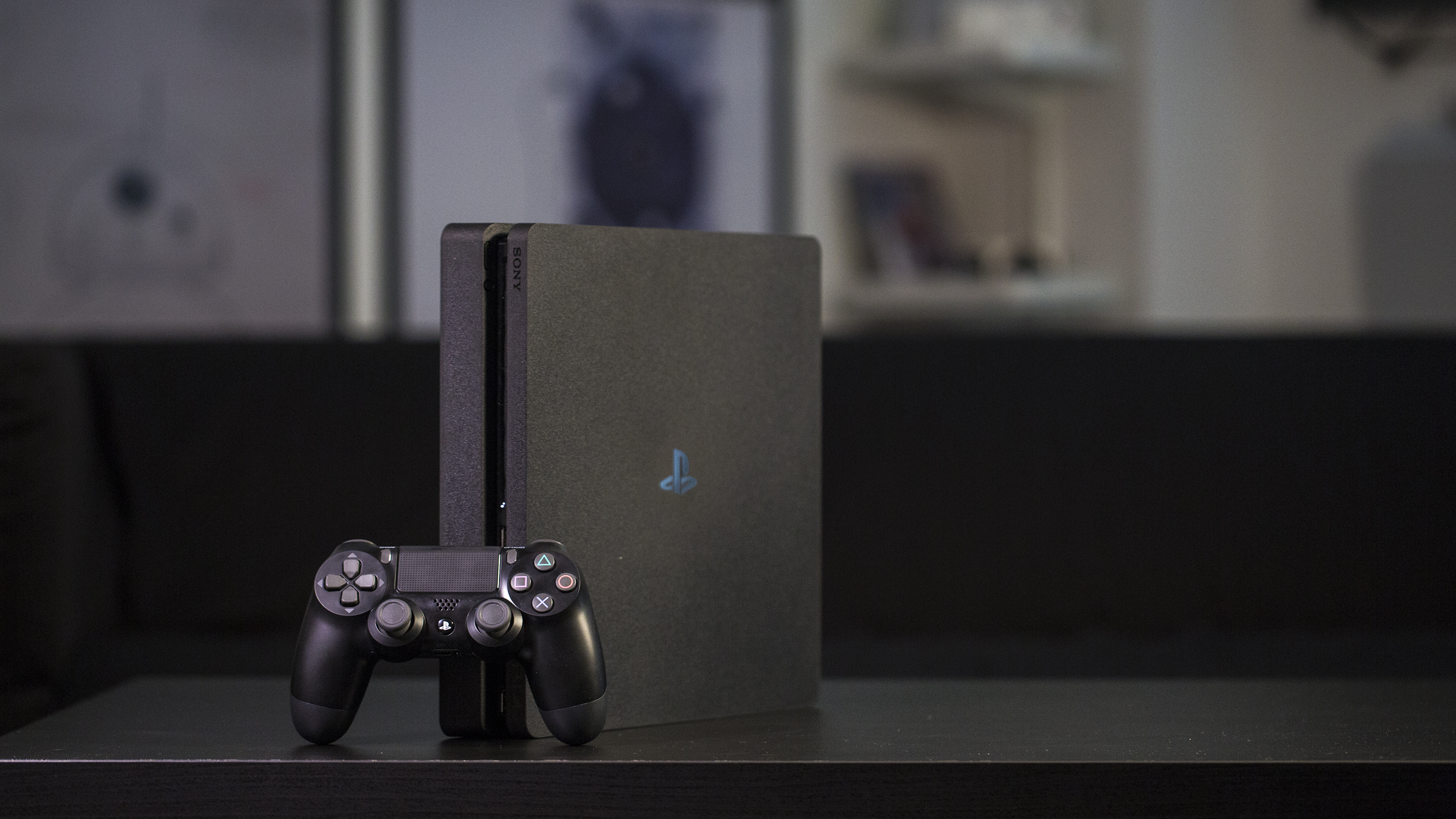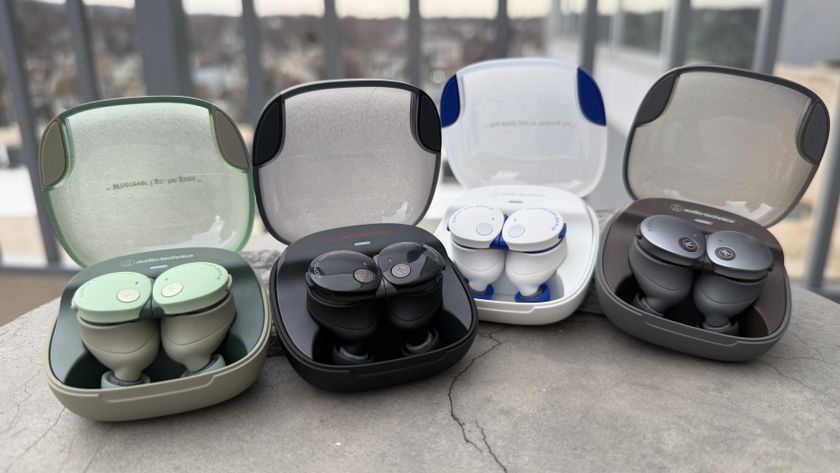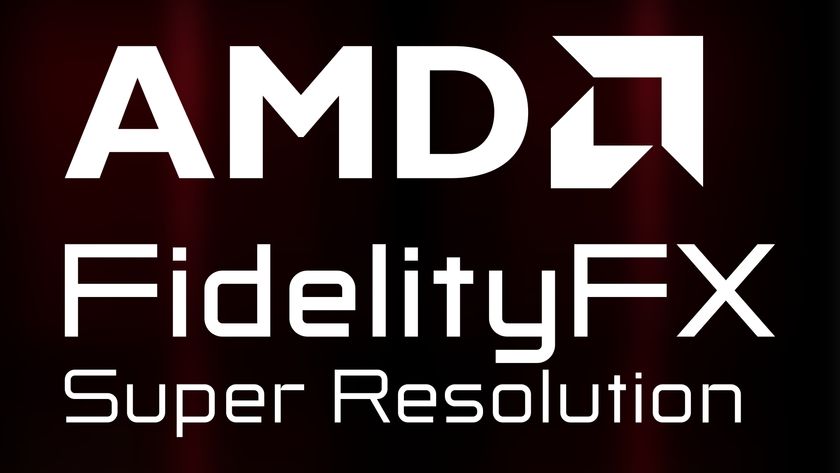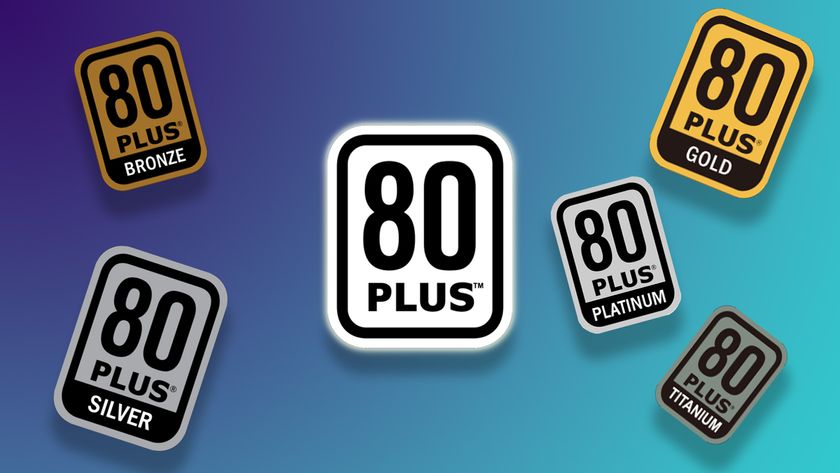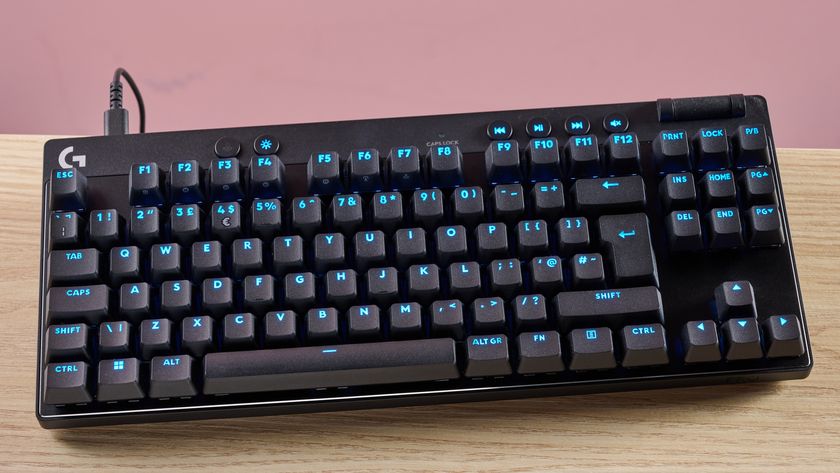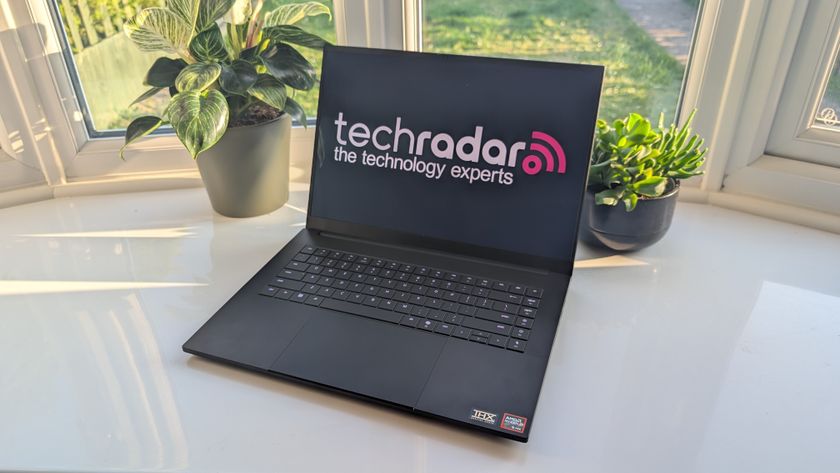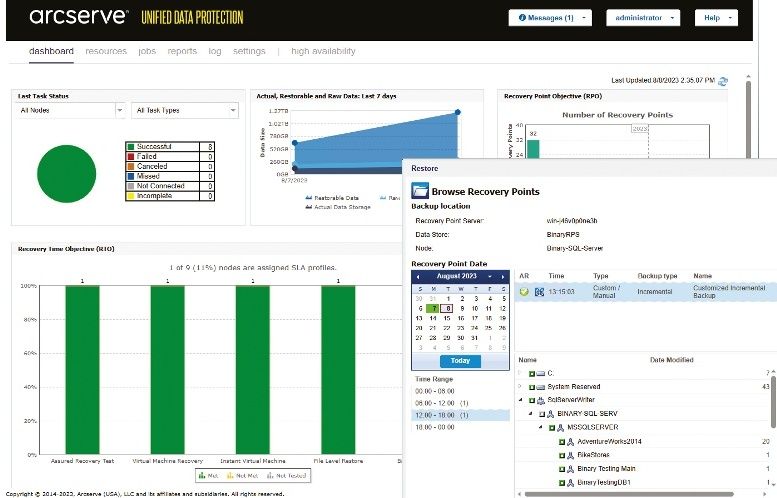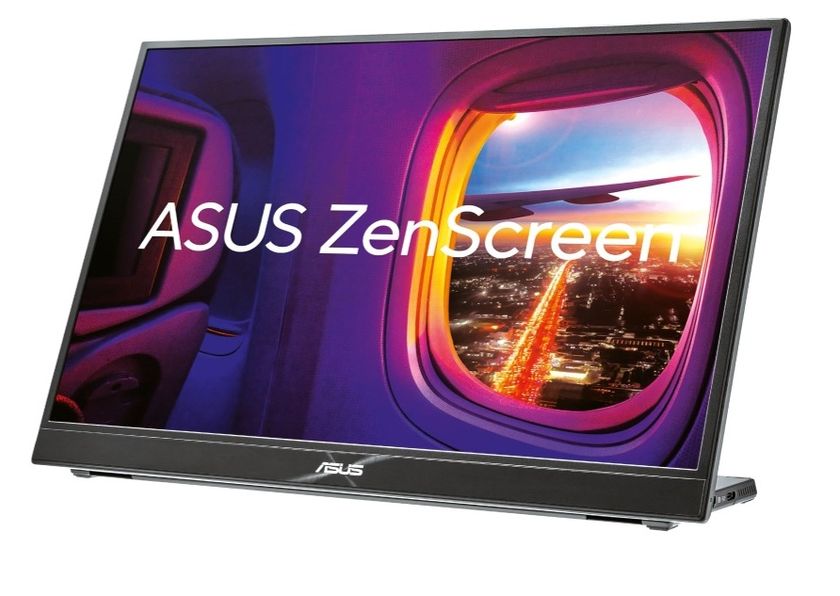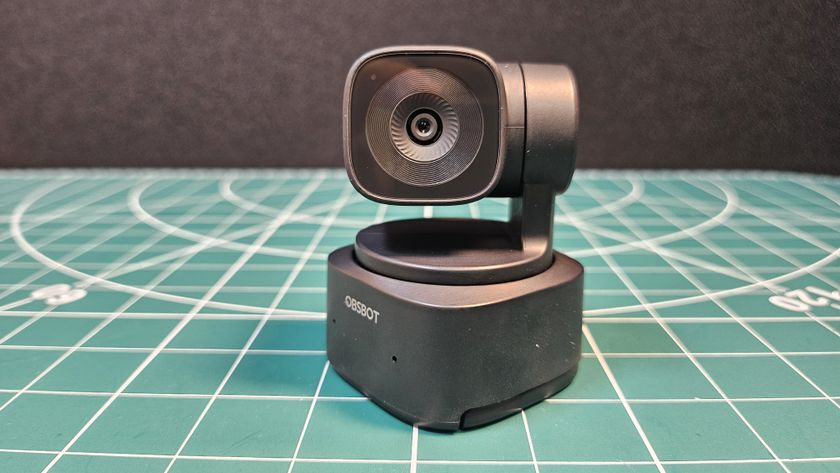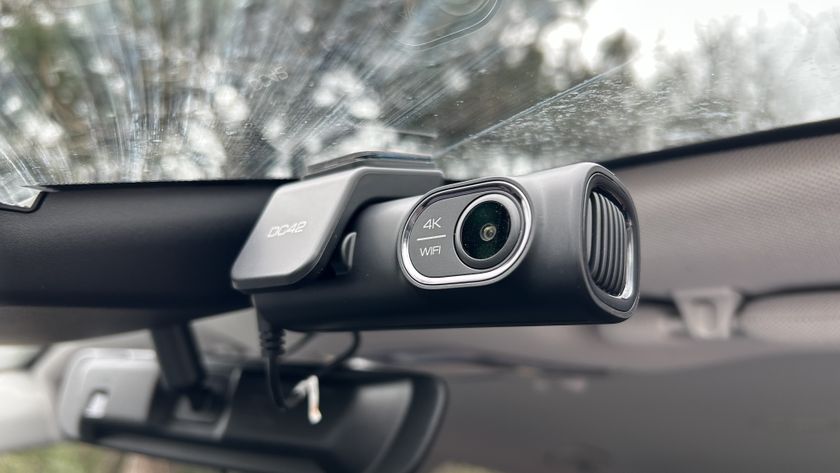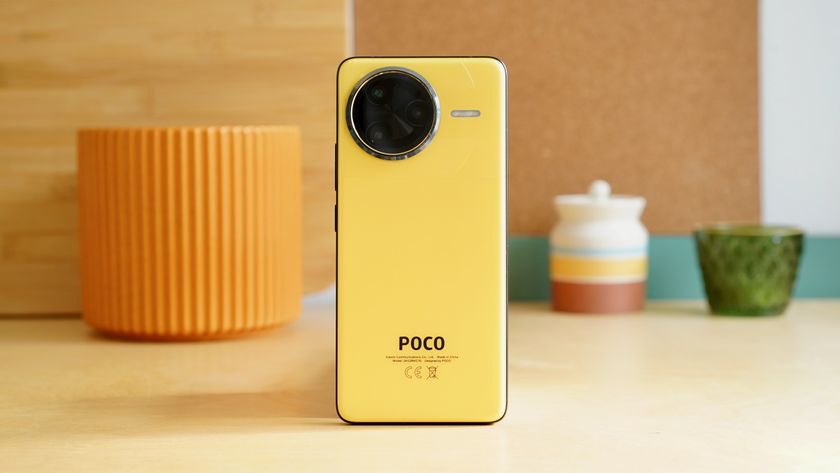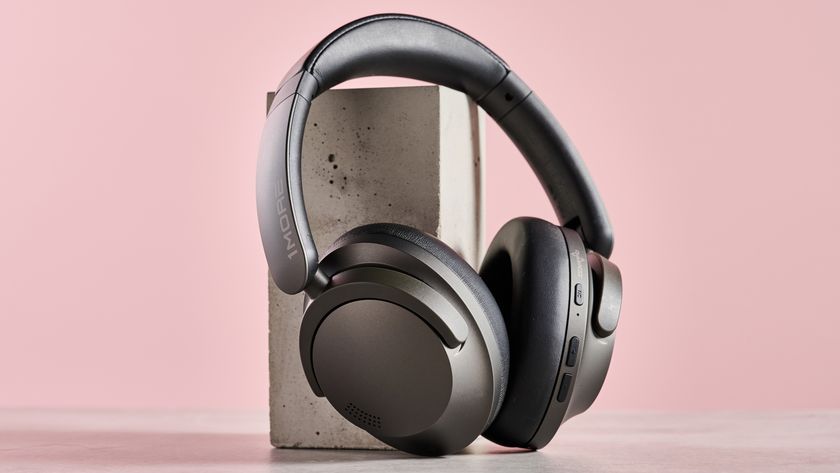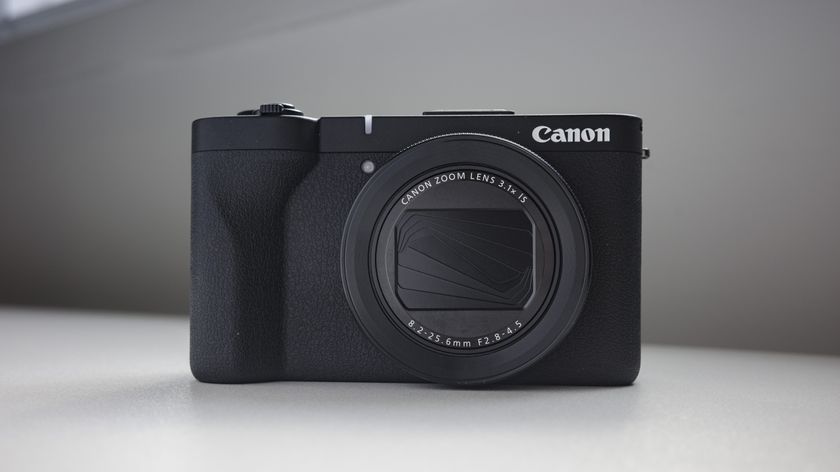TechRadar Verdict
An excellent all-round console with a fantastic catalog of AAA games, the slimmed down PS4 is better in almost every way compared to the original – barring one notable exception.
Pros
- +
Great games
- +
Good value
- +
Improved power efficiency
- +
PS Plus still a great deal
- +
DualShock 4 better than ever
Cons
- -
Optical audio removed
- -
No 4K Blu-ray player
Why you can trust TechRadar
The PS4 Slim offers the same insides as the original PS4 but benefits from a sleeker design that also conveniently shaves off a few figures from the price tag. It’s a fantastic console, even compared to the PS4 Pro and the next-gen PS5, so even though it may be starting to show its age, it doesn’t stutter for a moment.
Many models of the PS4 have been discontinued since the PS5 was released, but the PS4 Slim is still one of the remaining being stocked, and Sony intends to keep production going for as long as possible. So, you can find some reasonably priced PS4 bundles in any upcoming sales. But, if you’re looking for something to support 4K gaming, then the PS5 is more than likely up your alley.
The PS4 Slim is also the most affordable option for PS4 home consoles, but there are certain compromises because of this. There’s no 4K resolution and no optical audio output, but you can work with these limitations, so the PS4 Slim offers a lot of bang for your buck. The compact size also means the console is quieter and uses less power.
With all this in mind, is the PlayStation 4 Slim still a console that’s worth picking up or would those looking to game with Sony be better opting for a PS5? That console does offer a massive jump in power over the PS4 and, though there are shortages, it's going to be easier to find than the now discontinued mid-gen upgrade PS4 Pro.
Overall, the PS5 is the smart option to save for if you really want to future-proof for the next few years of PlayStation games. Yes, plenty of the latest releases are being released across the generations, so if you pick up a PS4 you won’t immediately be left behind.
However, you might find that some new games aren’t quite up to scratch on the older hardware. Plus, the PS5 is backwards compatible with the best PS4 games, so you won't miss out on the back catalogue. if you're truly looking to weigh up the best option for you, we've got you covered in our head-to-head guide: PS5 vs PS4: should you buy a PlayStation 5 in 2022?
If, however, you aren’t all that interested in the latest hardware with its 4K bells and whistles and you just want a machine that’ll help you catch up with the PS4’s fantastic library of games, then the PS4 Slim is an option that might just suit you. Read on for more detailed thoughts on the console.
Sony PS4 (Slim): quick questions answered
What's the difference between the PS4 Slim and the PS4 Pro? The PS4 Slim is essentially a slimmer, cheaper and better-looking version of the original PS4. In contrast, the PS4 Pro is more premium and can play games in 4K
If you want to dig deeper into the differences between the two PS4 consoles, then check out our head-to-head guide: PS4 Pro vs PS4: what's the difference? Do be aware, though, that the PS4 Pro is no longer widely available.
Is the PS4 Slim better than the PS4 Pro? When it comes to specs, no. It's the PS4 Pro that's the superior console. It offers you 'true' 4K gaming, which is difficult to get on other devices without compromising. It's also bulkier on the outside and on the inside, the GPU is a great deal faster. Although the CPU is architecturally similar, it's been clocked at a faster speed.
But that doesn't necessarily mean you should buy one. The PS4 Pro is better for those who want a premium gaming experience and have a 4K TV. If you don't have a 4K TV or money to spare, the PS4 Slim might be better for you.
Is the PS4 Slim 4K? No it's not. You won't get 4K with the PS4 Slim, so if you're interested in 4K gaming and a 4K Blu-ray player, you'll need to set your sights on the PS4 Pro or PS5 instead.
PS4 Slim: design

Cast your mind back to when the original PlayStation 4 hit the scene, and you may remember that its unconventional shape drew quite a bit of attention when it was first revealed. The slimmed down PS4 that debuted in 2016 more-or-less retained the core visual identity of the first PlayStation 4, but made the parallelogram package even more compact, smoothing off some of the edges.
The first PlayStation 4 measured 27.5 x 30 x 5.3 cm, whereas the latest PS4 Slim cuts that down to 26.5 x 26.5 x 3.8 cm, roughly a third smaller. The overall weight is comparably lighter too.
The first PS4 mixed shiny and matte plastics, but the PS4 Slim extends the matte black finish all over the console. The top-mounted colored light bar indicator – showing sleep, wake and off statuses – gets dropped in favor of small illuminated dots over the power button (which are actually harder to see, so take care before unplugging the unit).
As before, the disk drive slot is a front-facing affair, above small power and eject buttons. More recent revisions of the PS4 also featured physical buttons on the console, but the launch edition PS4 favored touch-sensitive controls instead. Two USB ports sit on the front of the PlayStation 4 Slim, as was the case on earlier PS4 models, but they're now much further apart and slightly easier to plug into.
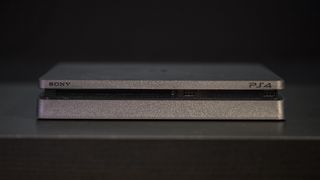
Both 500GB and 1TB versions of the PS4 Slim are available, though the former is much rarer. If you opt for the smaller of the two you might find your hard drive fills up surprisingly quickly with the console's reliance on mandatory game installs, but thankfully it's fairly easy to upgrade the internal hard drive or install games to an external hard drive.
Around the back is the power plug socket (no need for an external power brick), a HDMI port, the PlayStation Camera's expansion port (essential for the PlayStation VR) and an Ethernet network jack socket.
The only major casualty of the slimmed-down design is the Optical Out port on the rear: HDMI will suit the needs of many gamers for carrying audio signals, but the Optical Out port will be missed by those hooking up older home cinema receivers, or souped-up gaming headsets.
The PS4 Slim has plenty of nice design touches dotted around its chassis though. The iconic Square, Triangle, Circle and Cross symbols of the PlayStation brand are stamped into the side of the console (with the Circle acting as a fixture for those wishing to stand the console upright with a base accessory).
The same symbols are found stuck to the bottom too, acting as feet to raise the machine off a surface for improved airflow. All in, it's a well-considered design, markedly justifying its "Slim" street name.
PS4 Slim: setup
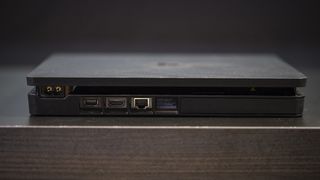
Setting up the slim PlayStation 4 is very easy – especially if you're upgrading from the original PS4 (or even a PS3), because you can use all the same cables, so no need to stretch behind your TV.
Simply plug in the included HDMI and power cables and connect to the internet to download the console's various patches and updates. Alternatively, you're able to skip Wi-Fi or Ethernet altogether and just pop in a game. Unlike the Xbox One, you can get to the homescreen without initially connecting to the web and patching first.
Once you do connect to the internet, you'll need to let the PS4 update before you can make purchases from the store or play online.
PS4 Slim: media
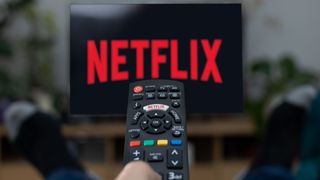
Since the very first PlayStation, Sony's home consoles have led the charge when it comes to media playback support. The PS One made for a great CD player, the PS2 was many gamers' first DVD player, and the PS3 introduced a Blu-ray deck and USB playback.
The PS4, while not introducing a new format of its own, picked up the baton passed by the PS3, offering wide-ranging streaming service support, Blu-ray and DVD playback, USB media functionality and even banging out the tunes with its own Spotify player. That's been carried over to the PS4 Slim.
What the PS4 Slim doesn't do, however, is offer an answer to the Xbox One S's 4K Blu-ray player, instead sticking with the original PS4's standard full HD Blu-ray player. It's still a strong deck, but anyone looking to show off their 4K TVs with the PS4 Slim will be disappointed (and it's notably absent from the PS4 Pro too).
You could argue that with streaming increasingly used to watch media content, it's not a desperately needed feature, especially if it keeps the overall cost down. But it will age the PS4 Slim console, preventing it from being fully future-proofed. What's perhaps more annoying is the complete removal of the optical out audio socket, which could cause headaches for those with older AV equipment.
However, one upgrade that applies to the entire range of PS4s, the PS4 Slim included, is HDR support. This adds greater detail to light sources in an image, and is pretty much a staple in TV tech these days.
All the other streaming services and apps featured on the PS4 return for the PS4 Slim, including (but not limited to) Netflix and Amazon Prime Video, as well as BBC iPlayer and TV from Sky in the UK, and HBO Go and Hulu in the US.
Sony's own movie rental platform is available too if you're looking for the latest Hollywood releases. YouTube is here, as is Twitch game streaming, and a Spotify Connect-enabled version of the popular music streaming service, letting you control tunes on your telly from the comfort of your phone.
Gerald is Editor-in-Chief of iMore.com. Previously he was the Executive Editor for TechRadar, taking care of the site's home cinema, gaming, smart home, entertainment and audio output. He loves gaming, but don't expect him to play with you unless your console is hooked up to a 4K HDR screen and a 7.1 surround system. Before TechRadar, Gerald was Editor of Gizmodo UK. He is also the author of 'Get Technology: Upgrade Your Future', published by Aurum Press.
